In 1959, site construction in Green Bank, West Virginia was impressive. After a few years of working out of old farm houses, the engineers and astronomers moved into this huge new office and electronics building, later named the Jansky Laboratory.

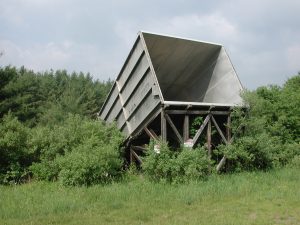
Gulping Radio Waves
The 13 foot x 17.5 foot aperture end of the 120-foot long Calibration Horn Antenna, otherwise known as the “Little Big Horn,” at Green Bank. It was built in 1959 to observe the sky’s strongest non-solar radio source, Casseopeia A, and measure its total power output at a frequency of 1.4 GHz (L-band, 20cm wavelength). It was also used to map Cas A’s spectrum and take absolute temperature measurements of the background sky.
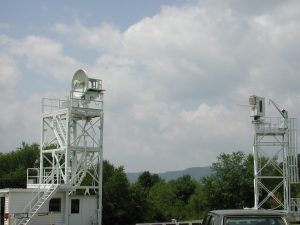
Receiver Testing Range
These towers in Green Bank are used to test new and serviced receivers. The tower with the small dish sends a signal, and the antenna across from it collects the waves and funnels the signal down onto the test receiver.
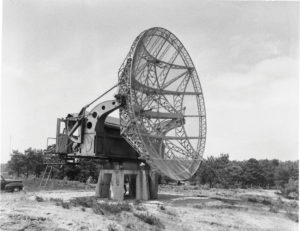
Kootwijk Repurposed Radar in 1967
During the WWII, the German army created the Atlantic Wall along the entire European coast, from Norway, through Denmark, the Netherlands, Belgium and France. Part of this Kammhuberlinie were overlapping radar stations, using the so-called Würzburg Riese radar antennas.
After the War, several of the antennas were confiscated by the Dutch Telecommunication service PTT. Some were brought to the radio station at Kootwijt, in East Netherlands. PTT gave one to the Dutch Association for Radio Emission from the Sun and the Milky Way (now ASTRON). On May 11, 1951, with this antenna, Lex Muller confirmed the detection of 21cm emission from atomic hydrogen in our Milky Way Galaxy six weeks after Harold Ewen found it with his feed horn at Harvard.
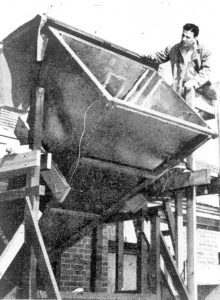
Horn o’Plenty Discoveries
This horn antenna was used by Harold Ewen and Edward Purcell at Harvard University to search for the 21 cm emission from neutral hydrogen in the Milky Way Galaxy. They finally detected it on March 25, 1951.
In 1950, Ewen was a physics graduate student building a receiver to detect the 21 cm line of neutral hydrogen. Purcell, his supervisor, asked for, and received, a grant of $500 from the Rumford Fund of the American Academy of Arts and Sciences for materials costs. Ewen installed the horn outside the fourth floor of the Lyman Lab at Harvard, with the waveguide leading in through the window to the receiver and recorder. In heavy rains, the horn antenna funneled water into the lab. During the winter, passing students found the horn a tempting target for snowballs.
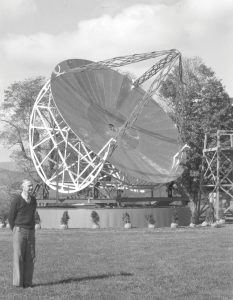
Grote Reber in Green Bank
In the early 1960s, Grote Reber came to the NRAO in Green Bank to reassemble his radio telescope built originally in 1937 in Iliinois. Here he is with the finished telescope and its receiver tower (right).





